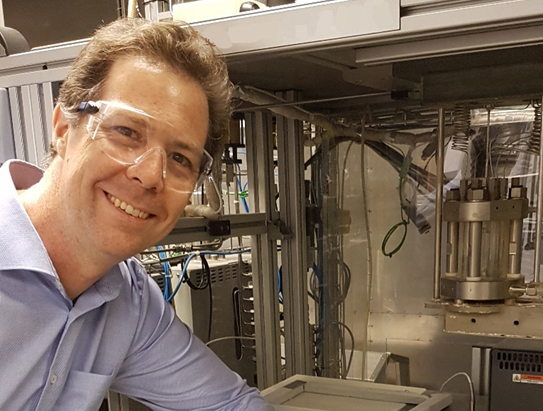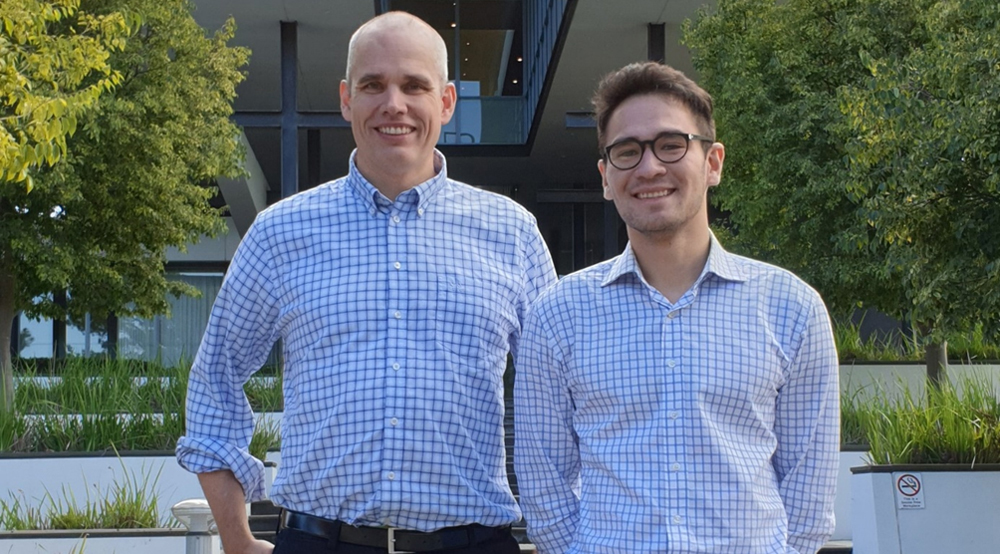Thermal conductivity is a key component in CCS, in regard to e.g. CO2 injection and ship transport. But, there is a knowledge gap on thermal conductivity, and NCCS (Norwegian CCS Research Centre) is doing concrete work on closing that gap through its research mobility program. In this blog post I will elaborate shortly on the mobility program and go in depth on our work on thermal conductivity.
NCCS Mobility program – why?
Researcher mobility can be a catalyst for innovation, networking, knowledge sharing, and dissemination between research institutions and partners that cannot be done as efficiently remotely. In 2019, NCCS launched a dedicated mobility program to facilitate these activities.
Learn more about CCS
Join our newsletter to stay updated with all the latest research results and news from NCCS: The Norwegian CCS Research Centre.
In the first call for proposals in late 2018, Task 8: Thermodynamics and Fiscal and its leader, Senior Scientist Sigurd W. Løvseth, was awarded funding for a research stay at the University of Western Australia (UWA) for seven months in 2019 to work on closing the knowledge gap on thermal conductivity. We are also grateful for complementary funding from the CLIMIT programme.
- May also be of interest: The 10th Trondheim CCS Conference will be held in Trondheim June 17-19, 2019. Read more and book tickets here.
The need for thermal conductivity measurements
For injection of cold liquid CO2 into reservoirs, thermal conductivity κ must be known to assess heat transfer and integrity issues of wells and reservoirs. Thermal conductivity is also essential when designing ships for transport of liquid CO2 at low pressure.
- May also be of interest: NCCS – The value of bringing the CCS world together
Additionally, viscosity and thermal conductivity play an important role for the performance of heat exchangers in capture and conditioning, pressure drop in solvent columns, adsorption and membrane processes.
Unfortunately, although it is known that the impurities can have large impact on the thermal conductivity, the uncertainty of current models for mixtures is very high and unknown due to the lack of data. In fact, there are no published data for the thermal conductivity of CO2-rich mixtures. There are also few sources for the gas phase for most impurity components.
Uncertainty of current models for mixtures is very high and unknown
The primary objective of the visit is therefore to measure thermal conductivity of CO2-rich mixtures. Secondary objectives include:
- To develop correlations based on the new experimental data
- To strengthen the research cooperation between NCCS and relevant Australian institutions and projects, both within the specific area of thermophysical property measurement, but also within CCS research in general
- Through communication activities improve knowledge of CCS activities in Australia among the partners of NCCS, and also spread knowledge of NCCS and other Norwegian CCS activities in Norway among relevant Australian partners
The project will enable both improved property models and hence more robust and cost-effective CCS system. It is also the hope that the project can reap synergies between Norwegian and Australian CCS communities and pave the ground for new opportunities both for NCCS and Norwegian industry involved in CCS.

Research methodology and plan
Thermal conductivity of fluids is inherently hard to measure, due to convection effects not present in solid materials. For thermal conductivity measurements, the transient hot-wire techniques considered to be the most accurate available technique. It almost completely eliminates the effect of natural convection, which is an issue with more traditional steady-state hot-wire methods.
- May also be of interest: Safe CO2 transport pipes is part of the climate solution
During the stay, measurements of thermal conductivity will be performed with a state-of-the-art apparatus developed together with NIST which employs the transient hot wire technique using tantalum wires.
Projected impact and added value to NCCS
The most immediate and tangible result of the stay will be new measurement data in unchartered territory for an important fluid property in CCS. During the recent technical meeting of NCCS Task 8, major industrial partners explicitly asked that these measurements should be prioritized. In turn, these new data will enable much improved models with a quantified uncertainty.
The stay will mean that the host institution of NCCS for a while will have a presence in Australia, which is expected to be an important market for CCS ahead, as explained in the chapter below. Perth is a centre of the Australian oil and gas industry, and possible contacts with local industry could enable additional activities related to CCS. The communication activities to be described below will also help to improve the mutual awareness within the CCS communities of the two countries.
Finally, the stay with a leading experimental group will lead to strong competence building, and publications and association with well esteemed scientists will could up new doors within academia.
- May also be of interest: Why good models are important for safe and efficient CO2 transport
Following Løvseth’s stay, the collaboration between UWA and SINTEF ER continues through a stay by the PhD candidate Martin Khamphasith in Norway with the objective of performing advanced VLE measurements for NCCS.
CCS and CCS research in Australia
Already a hot and dry country, global warming can be very dramatic both for the Australian economy and ecology. At the same time, Australia is one of the countries with the highest emissions per capita in the world [20], with a large coal and increasing oil and gas production. Hence, Australia is an important country for CCS and CCS research.
For instance, in 2018, the world largest CO2 sequestration project until line, Gorgon, will come online with a projected injection of 3.5-4 Mtpa CO2 just off the coast of Western Australia. Australia is also home to institutions such as the Global CCS Institute, CO2 CRC, National Geosequestration Laboratory, as well as a number of other initiatives and organizations relating to CCS and CCS research.
Learn more about CCS
Join our newsletter to stay updated with all the latest research results and news from NCCS: The Norwegian CCS Research Centre.
Host institution: Fluid Science & Resources Division of UWA
The host of this mobility initiative is Professor Eric May, who is the Chevron Chair in Gas Processing and is co-leads the Fluid Science and Resources Division in the School of Engineering of UWA.
Professor May has won a number of awards for his outstanding research and has been a leading force in establishing the National Geosequestration Laboratory, including the CO2 research facility at the UWA campus, and the Australian Centre for LNG Futures. He has been successful in attracting funding for a number of projects, which has enabled the establishment of an advanced lab that includes state of the art equipment for experimental fluid property measurements.
Professor May has over the last decade been a valuable contributor to new technology for fluid property measurements, including the development of two capillary viscometers which currently are further developed for high pressure applications in the ImpreCCS project. The publications of professor May are currently cited more than 1400 times in Scopus, resulting in an h-index of 23.
The stay activates 164 000 AUD in-kind contribution from UWA in the form of supplies, technical support and hours by professor May and other staff in his group.

The UWA PhD candidate Martin Khamphasith will already in August go to Norway for about 6 months with the objective of performing advanced VLE measurements for NCCS.
NCCS mobility awards 2019
In 2019, NCCS has awarded an additional five mobility grants. Stay tuned to the SINTEF Blog to get updates on the NCCS mobility program and hear more about the results and learn more about the researchers and topics.
| Task | Researcher | To | Time frame | |
| 6: CO2 capture integration | Martin Haaf | SINTEF | 3 months | |
| 7: CO2 transport | Barbara Re | SINTEF | 5 weeks | |
| 8: Thermodynamics and fiscal metering | Martin Khamphasith | SINTEF | 6 months | |
| 9: Structural derisking | Mark Mulrooney | UNIS | 2 months | |
| 9: Structural derisking | Johnathon Osmond | Gulf Coast Carbon Center, Austin Texas | 3 months | |

Pingback: ImpreCCS: Lower CCS cost and risk through better CO2 viscosity and thermal conductivity knowledge - #SINTEFblog
Pingback: Utilization of Municipal Solid Waste to Achieve Negative CO2 Emissions - #SINTEFblog
Thermal conductivity (often expressed as k, λ, or κ) refers to the intrinsic ability of a material to transfer or conduct heat. It is one of the three methods of heat transfer, the other two being: convection and radiation. Heat transfer processes can be quantified in terms of the corresponding rate equations. The speed equation in this mode of heat transfer is based on Fourier’s law of heat conduction.
https://www.thermtest.se/